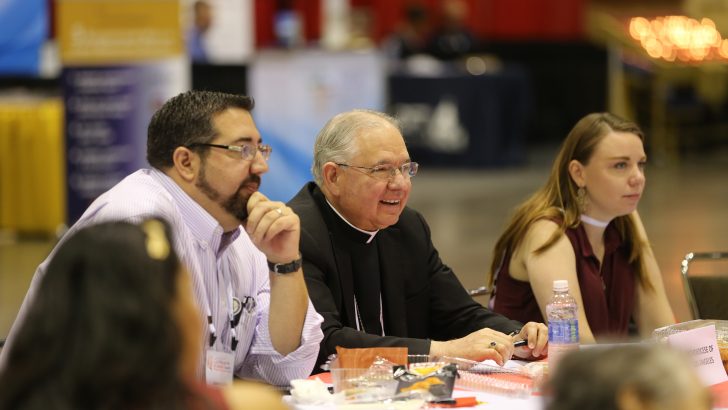I was in the United States this past week where I was attending the ‘Convocation of Catholic Leaders’ on the theme of ‘the joy of the Gospel in America’. Five years in planning, the meeting brought together 3,500 delegates from various US dioceses and Catholic organisations to chart the future direction of the Church in the US.
The meeting was charged with optimism (it is America, after all) but also a real sense of the challenges facing the Church in the US.
In preparation for the convocation, the US bishops’ conference carried out extensive research – statistical as well as qualitative.
The overall Catholic population has risen over the past 50 years from 48.5million in 1960 to 74.2million in 2016. But, so has the number of former Catholic adults in the past 40 years, from 7.5million in 1975 up to 30.1million in 2016.
Almost half of Catholics who are now unaffiliated (48%) left Catholicism before reaching 18 years old. An additional three in ten left the Catholic Church as young adults between the ages of 18 and 23.
It’s clear that the Church has a problem with ‘millennials’ (roughly those who were born between 1981 and 2000). Only 24% of Catholic millennials attend Mass at least weekly, as compared to 56% of Catholics born before 1943.
What was striking about the atmosphere here is that none of this is leading to pessimism. Outlining some of the challenging statistics, academic Dr Hosffman Ospino finished off his talk with the upbeat message “what a wonderful time to be a Catholic in the USA” to rapturous applause. It isn’t that people aren’t realistic about the challenges, it’s more that people are anxious to get on with the challenges and find new ways of re-presenting the Gospel to people – particularly young people.
Impression
Sometimes I get the impression that, in Ireland at least, we often allow ourselves to be overwhelmed by the depth of the challenge facing us. Sometimes, we’re also shell-shocked by the rapid change that has taken place in terms of the Church in Ireland. There’s a danger that this can lead to a certain type of paralysis that prevents us from just getting on with the mission entrusted to us.
Over coming weeks, I’ll be unpacking in The Irish Catholic some of the key themes that emerged and how they might feed in to discussions we’re having about the Church in Ireland.
***
An individualistic culture
One of the issues that committed Catholics worry about is Mass attendance. Numbers are not the be all and end all of the life of the Church, but they do say something about the vitality (or lack of it) of Catholic life. If people are not motivated to go to Mass, we’re doing something wrong.
One of the challenges is that our culture in the west has become more individualistic. This is not so much a value judgement as just a fact. Technology has allowed people to be more self-contained than ever before. This leads to a certain loss of the sense of doing things together. And, if communal life is not important, being with others doesn’t matter. This is a tough issue for Catholics to grapple with given that the Church is predicated on people coming together to celebrate the Eucharist.
***
In his talk in Germany at the weekend, Archbishop Diarmuid Martin repeated something he has mentioned on numerous occasions: the fact that Mass attendance in some Dublin parishes is around 2%. It’s a shockingly low figure, and begs the obvious question about whether there should be more consolidation of parishes and churches. Where I live in south Dublin, I can walk comfortably in less than 10 minutes to six different churches. Often the churches are at best half-full. Wouldn’t we more authentically be a community of believers if we had fewer Masses with more people rather than scattered handfuls?


 Michael Kelly
Michael Kelly Archbishop Jose H. Gomez of Los Angeles, who is vice president of the US Conference of Catholic Bishops, during a breakout session with other delegates during the ‘Convocation of Catholic Leaders’.
Archbishop Jose H. Gomez of Los Angeles, who is vice president of the US Conference of Catholic Bishops, during a breakout session with other delegates during the ‘Convocation of Catholic Leaders’. 